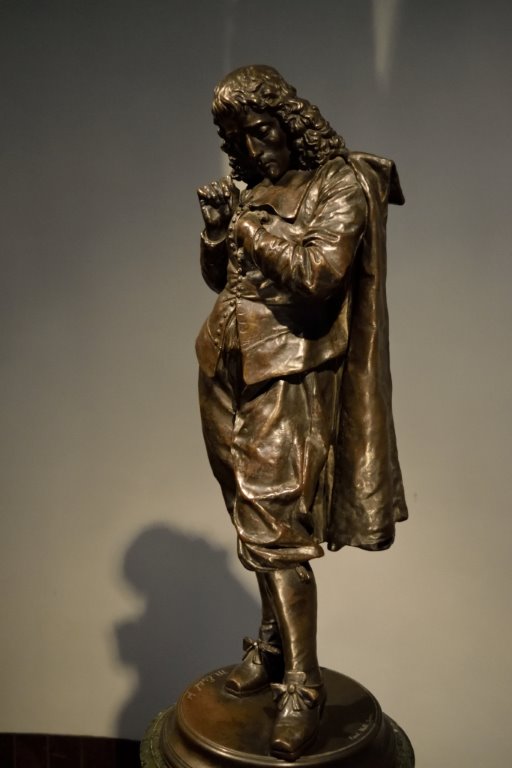Baruch Spinoza
Moses Jacob Ezekiel (1844-1917)
Bronze
ca. 1800
Cincinnati Skirball Museum
The sculptor Moses Jacob Ezekiel (1844-1917) was a Richmond-born American patriot and expatriate who lived in Rome for more than 40 years; a Confederate soldier who fought in the Battle of Newmarket; a host to the rich and famous in his home and studio in the ancient Baths of Diocletian, rubbing shoulders with the likes of Franz Liszt, Mark Twain, Kaiser Wilhelm II, J. P. Morgan, as well as kings, presidents, and heads of state. He achieved many firsts—the first cadet of Jewish descent to attend Virginia Military Institute; the first Jewish sculptor to create a bust of a living rabbi (see Isaac Mayer Wise on the third floor); the first Jewish sculptor to be commissioned by an American Jewish society (B’nai B’rith for Religious Liberty); the first Jewish artist to win the Michael Beer Prix de Rome from the Berlin Royal Academy of Fine Arts.
A bronze statue of Baruch Spinoza by Ezekiel has recently been moved from storage to the lobby of Mayerson Hall, the building that houses the Skirball Museum. The authorities of The Hague, the seat of government in the Netherlands, commissioned Ezekiel to execute this statue of the renowned seventeenth-century philosopher. Like Ezekiel’s own ancestors, Spinoza was born into the Sephardic Jewish community in Amsterdam. His descendants immigrated to the Netherlands after escaping religious persecution in both Spain and Portugal in the sixteenth century. Spinoza was trained in Talmudic scholarship, but his unconventional views about God led to his summons before a rabbinical court followed by excommunication. Considered one of the great rationalists of seventeenth-century philosophy, Spinoza espoused a purely theoretical definition of God and he believed that everything that exists is God. Initially reviled as an atheist, he was admired by the Romantic thinkers, who were attracted by his view of “God or Nature” as everything.
Ezekiel depicted Spinoza in deep thought. Skillfully modeled and bearing a casual yet elegant pose, the sculptor always considered this one of his best works

